Canning Tomatoes in Water Bath Canner | Safe & Easy Method
on Sep 29, 2020, Updated Feb 28, 2025
This post may contain affiliate links. Please read our disclosure policy.
Canning tomatoes in a water bath is a safe and easy method of preserving the harvest. You can have a taste of summer all winter long by home canning tomatoes at the peak of their season.
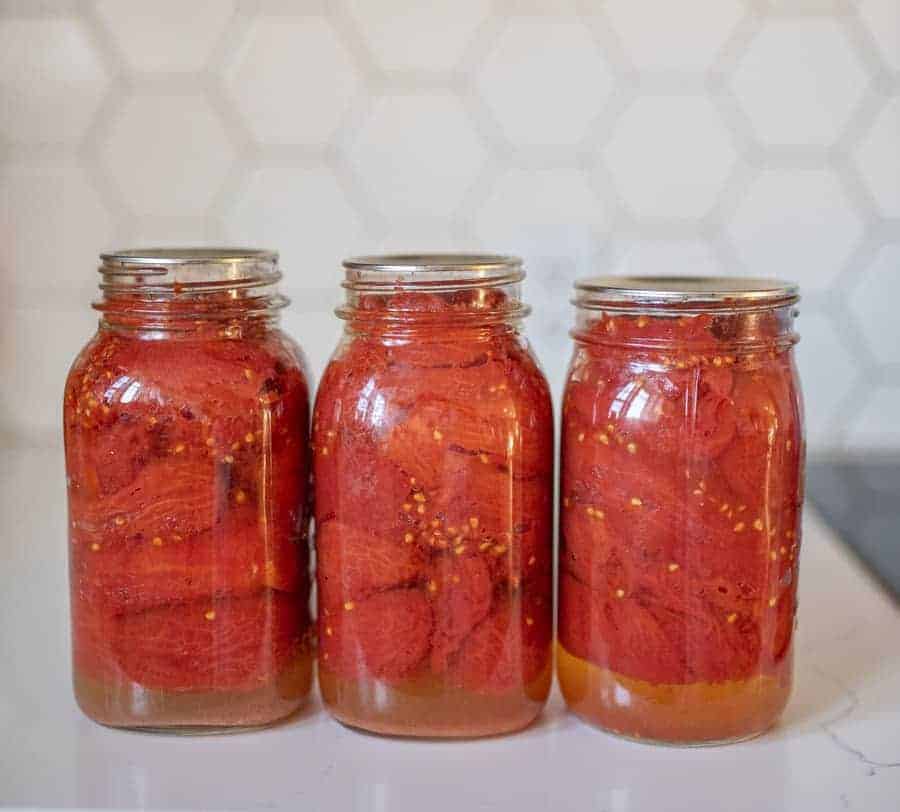
Canning tomatoes is a great way to make the summer bounty shelf-stable. And canned tomatoes are one of the easiest things to use later in the winter because they are a stand alone ingredient.
The water bath canning method of preserving foods is a reliable, safe, and easy way to stock your pantry with real foods. Even if you’re hesitant to try pressure canning, I encourage you to embrace the water bath method!
Table of Contents
- Why You’ll Love Canning Tomatoes in Water Bath Canner
- Important Safety Note!!!
- Recipe Ingredients and Supplies
- How to Can Tomatoes in a Water Bath Canner
- FAQs for Canning Tomatoes
- Expert Tips
- How do I know if I canned correctly?
- How to Store Canned Tomatoes
- Ways to Use Home Canned Tomatoes
- More Preserving Recipes to Consider
- Canning Tomatoes in Water Bath Canner Recipe
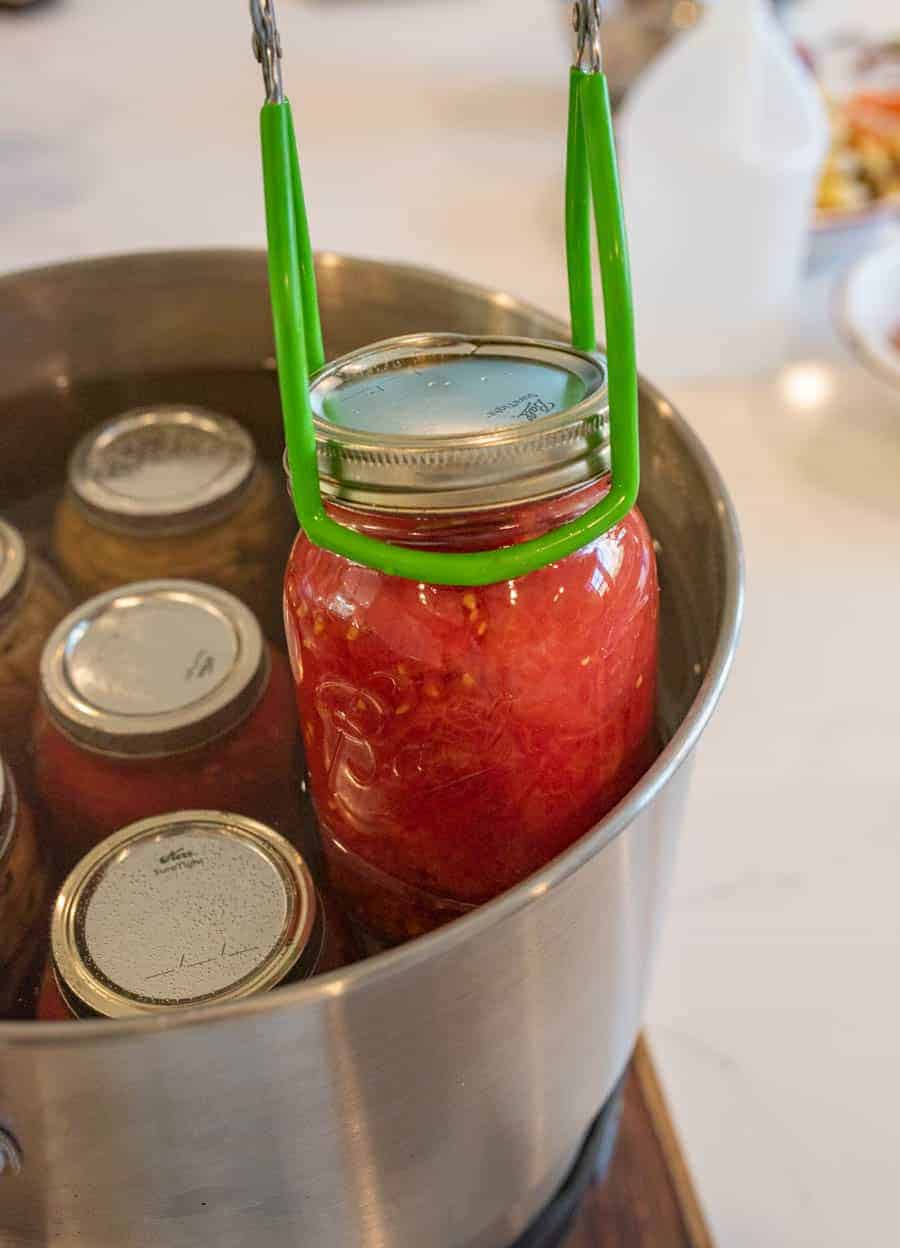
Why You’ll Love Canning Tomatoes in Water Bath Canner
- Versatile Ingredient: Canned tomatoes are super versatile – use them in sauces, soups and chilis.
- Eat the Harvest: They are a great way to preserve some of your garden harvest at its peak and reduce food waste.
- Fresh Flavor: Your family will love the freshness they add to a recipe, especially in the winter.
🍅 Learning the basics of canning is such a great skill to develop, and I love teaching on this handy topic!
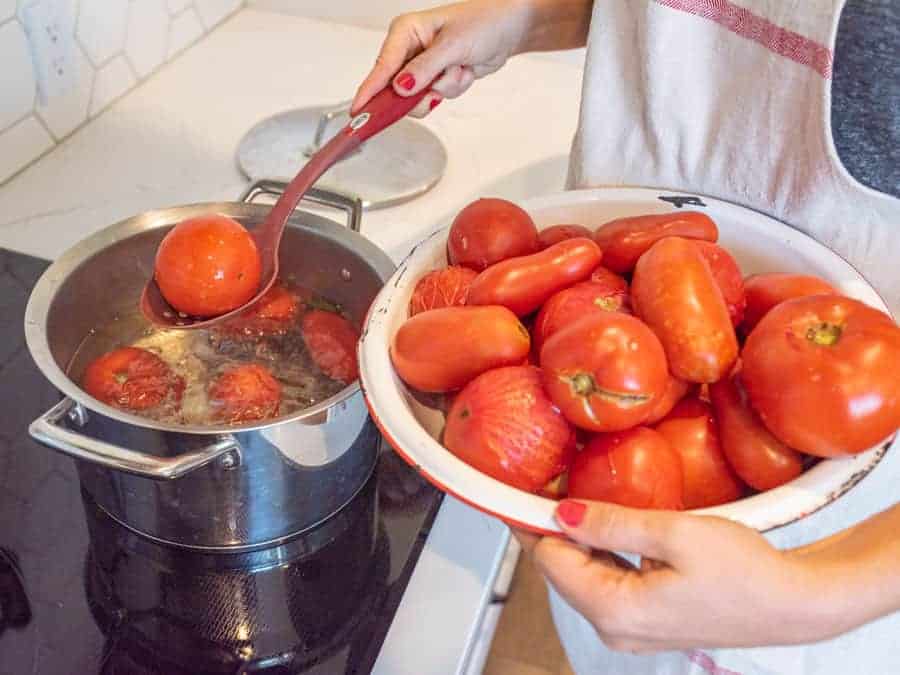
Important Safety Note!!!
When canning tomatoes in a hot water bath, it’s important to have the right acidity level in order to prevent food borne illnesses, such as botulism. To ensure the right level of acid, add 2 tablespoons of bottled lemon juice per quart of tomatoes.
Recipe Ingredients and Supplies
- Tomatoes: Any kind will do, and you can even mix multiple types together (such as Roma and Big Boy).
- Bottled lemon juice: Bottled has a more consistent acid level than fresh lemons.
- Salt: This is optional. If you include it, use pickling salt or kosher salt.
- Hot water bath canner: If you’re new to canning, check around to see if you can borrow one before investing in this appliance or check your local thrift stores.
- Large stockpot
- Mason jars with lids and rings: You will need 7 quart-size jars for a full canner load.
- Funnel and jar lifter: These tools make it so much easier to fill the jars and take them out of the hot water bath.
See the recipe card below for full information on ingredients and quantities.
How to Can Tomatoes in a Water Bath Canner
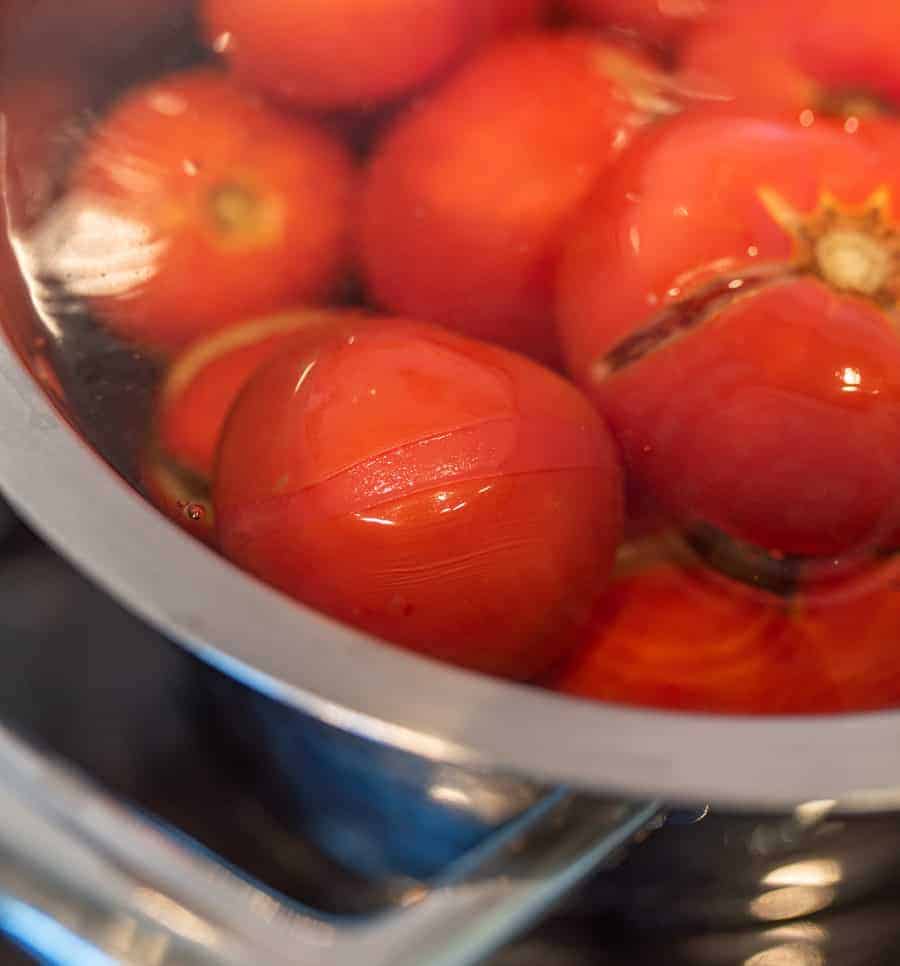
Step 1: Put washed tomatoes in boiling water until the skins split, about 3 minutes.
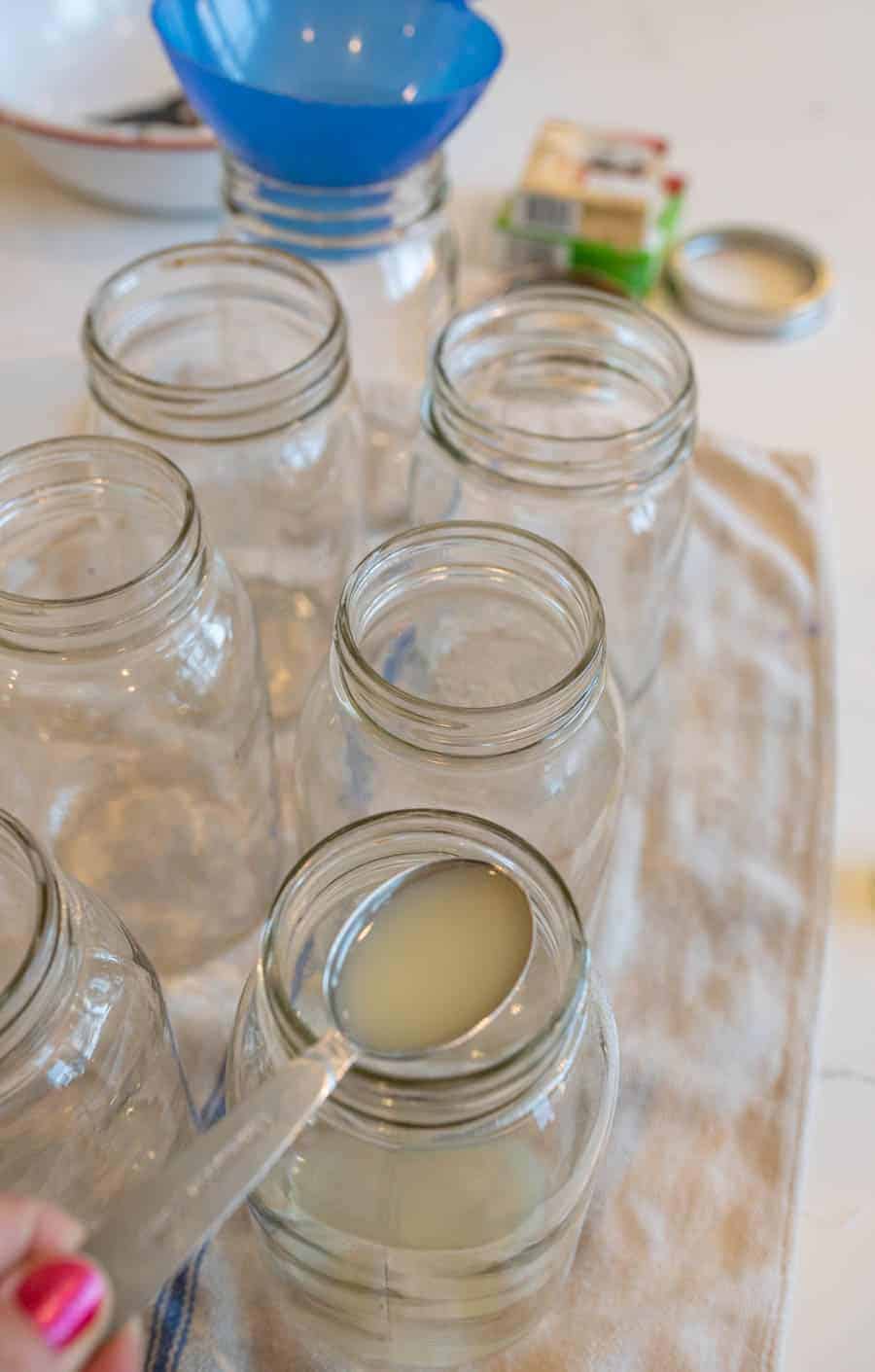
Step 2: Prepare clean jars by adding 2 tablespoons of lemon juice to the jars to prevent food borne illnesses.

Step 3: Slip the skins of the tomatoes off and remove the core.
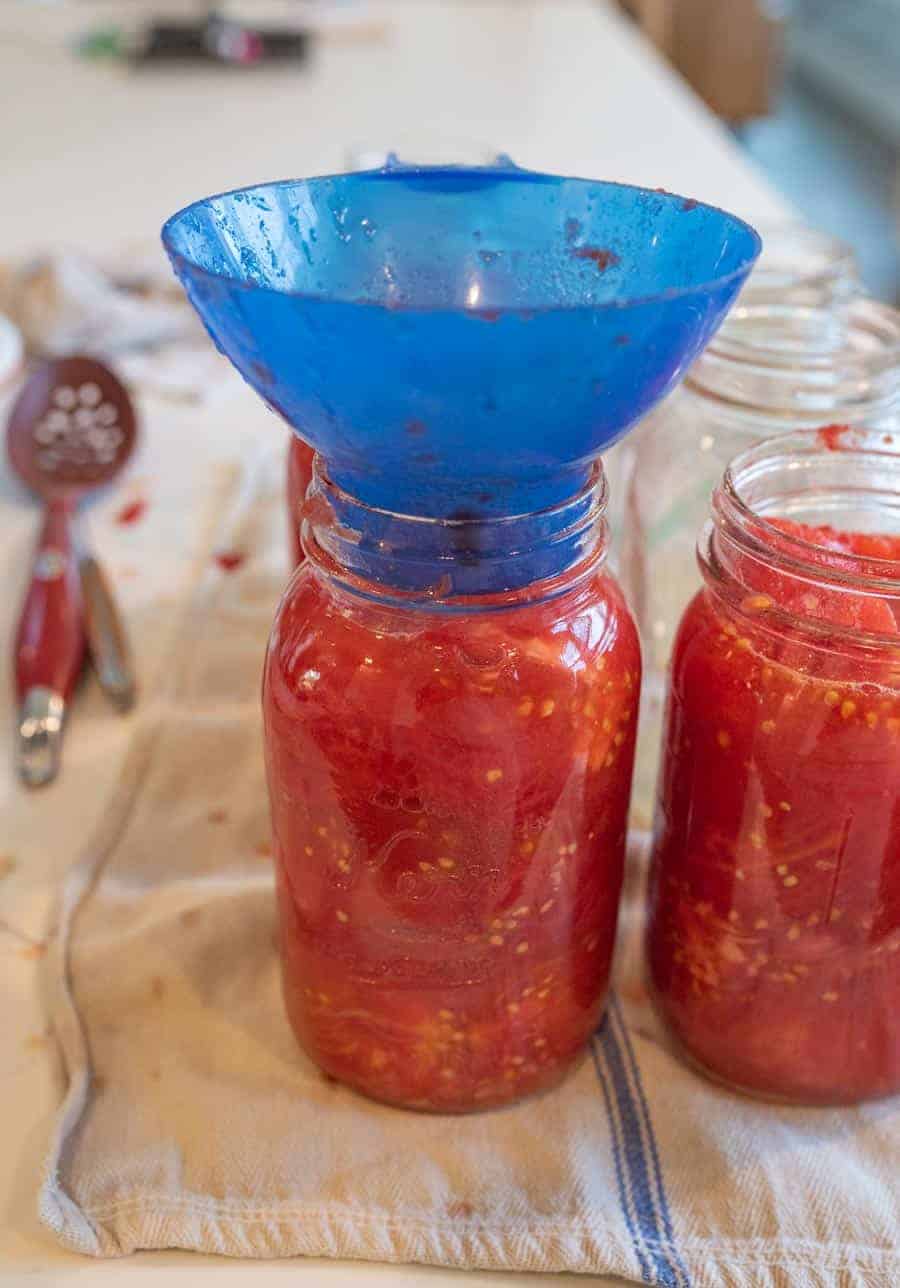
Step 4: Use a funnel to fill up the jars with the prepared tomatoes and their juices leaving ½-inch head-space from the top.
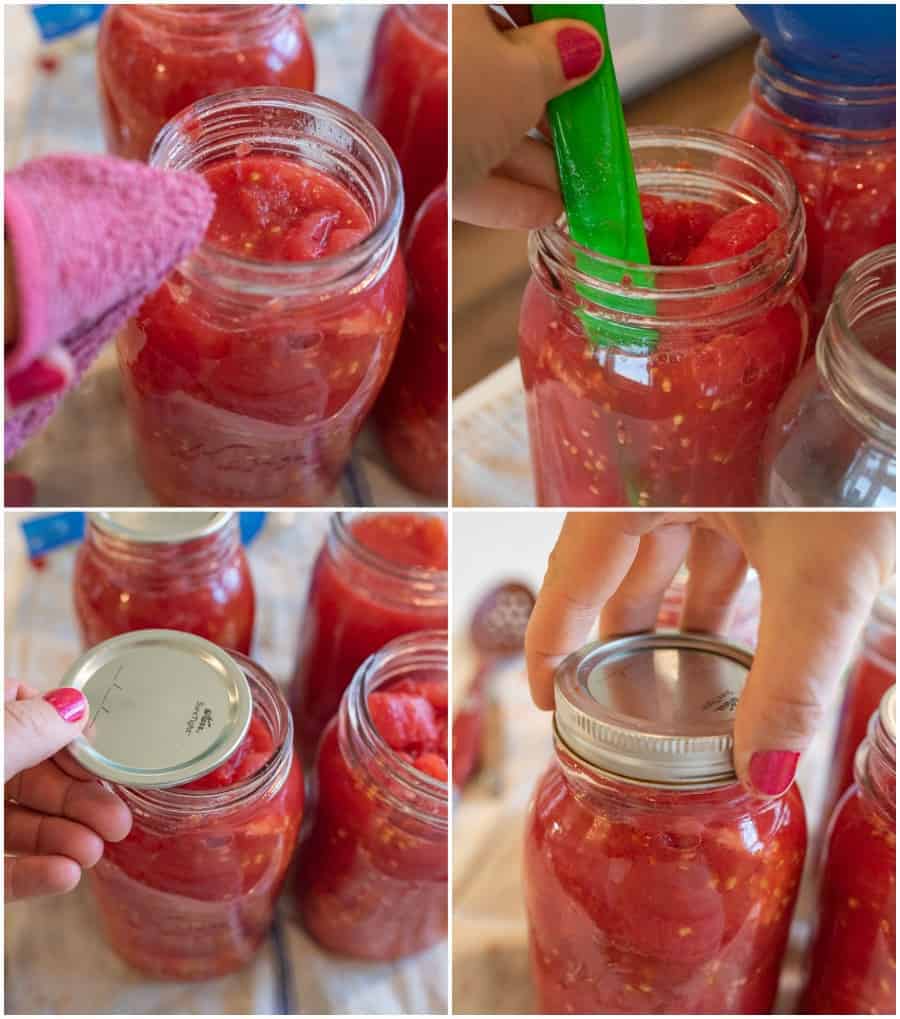
Step 5: Remove any air bubbles by running a knife along the side of the jar. Wipe the rims of the jars clean, add the flat lids, and screw on the rings.
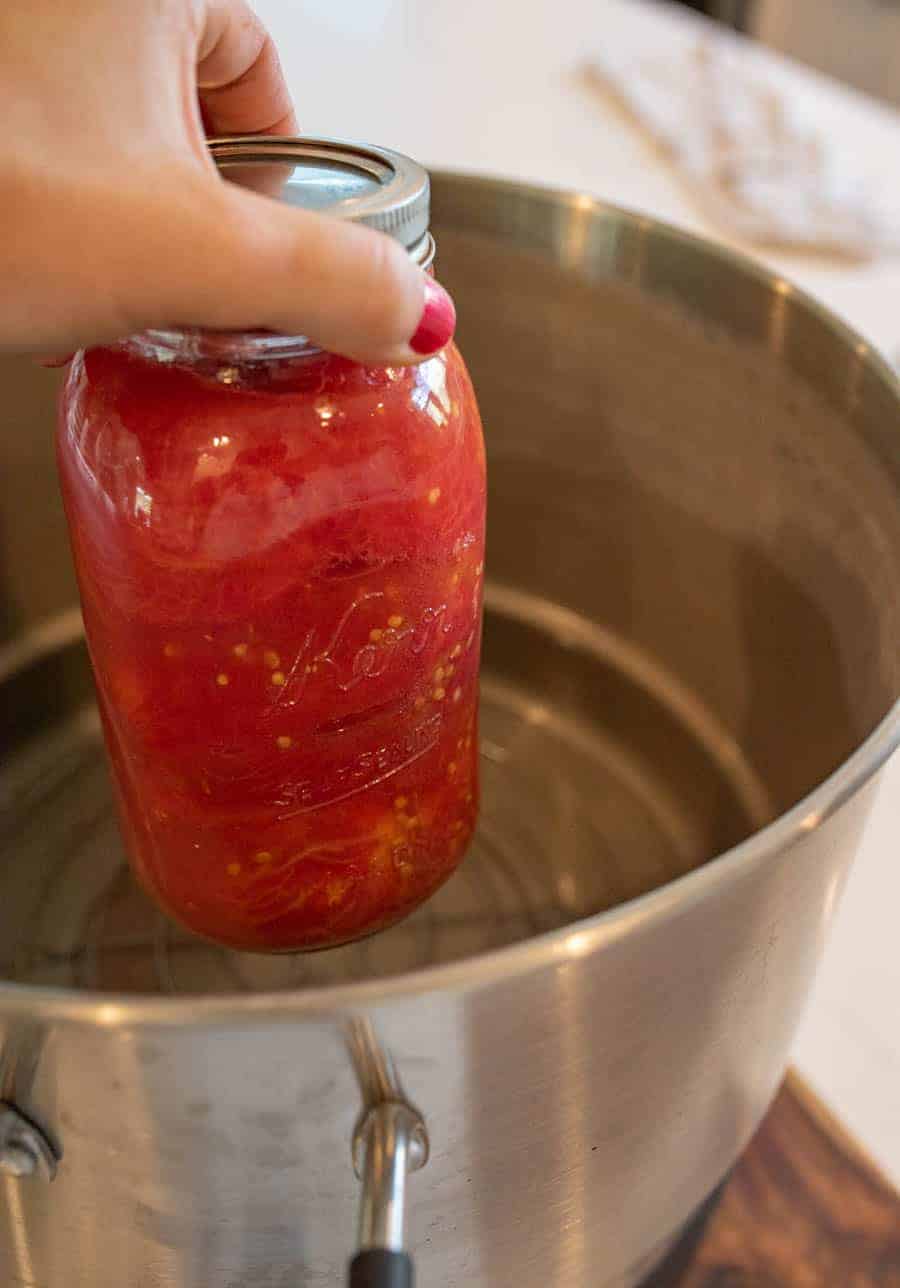
Step 6: Place the jars in a lukewarm water bath making sure the water is a couple of inches above the jars.
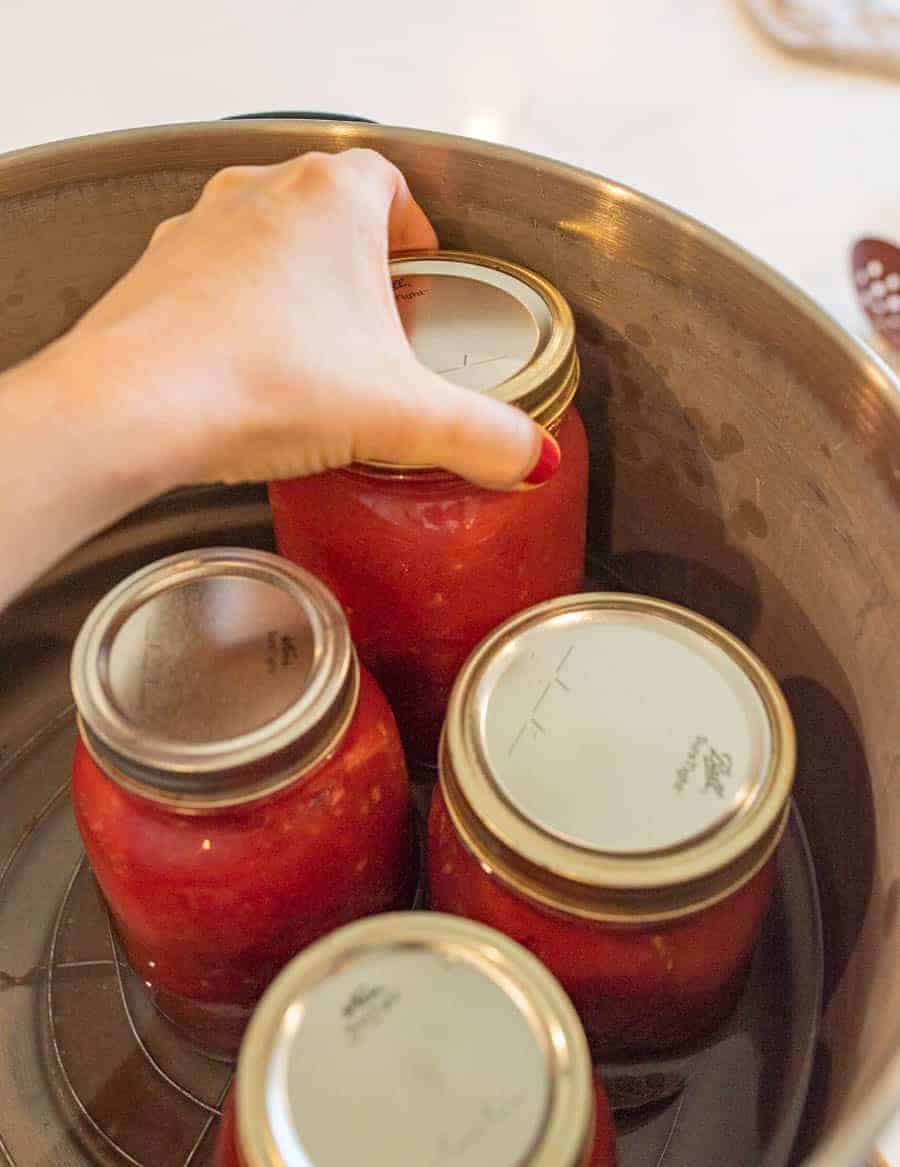
Step 7: Bring the water to a boil and start the timer. Processing time will depend on altitude. See recipe card for more details.

Step 8: After the processing time is up, remove the jars and cool before storing in a cool, dark place.
FAQs for Canning Tomatoes
You’ll need about 21 pounds of fresh ripe tomatoes to make 7 quarts of whole tomatoes in their own juice, which is considered a full canner load.
The type of tomatoes doesn’t matter a lot. The meatier oblong tomatoes make for meatier canned tomatoes, but traditional tomatoes work great, too. I just mix whatever ripe tomatoes I have together in the jars.
Adding lemon juice ensures that the right pH level is reached for safe storage. For canning in a hot water bath, the pH of the food must be 4.6 or lower (acidic). Read more here.
Use them just like you would store-bought canned tomatoes. However, they do have more liquid than a can from the store, so you may need to drain some off some of the water before using them in another recipe.
To make it shelf-stable the pH of the recipe needs to be correct and adjusting ingredients will change the pH. It’s important to use approved recipes from a safe source. This recipe was developed by the National Center for Home Preservation.
Try to use your canned food within 1 year of canning it. It’s generally fine longer than that, but the goal should be to use them within a year for best flavor and texture.
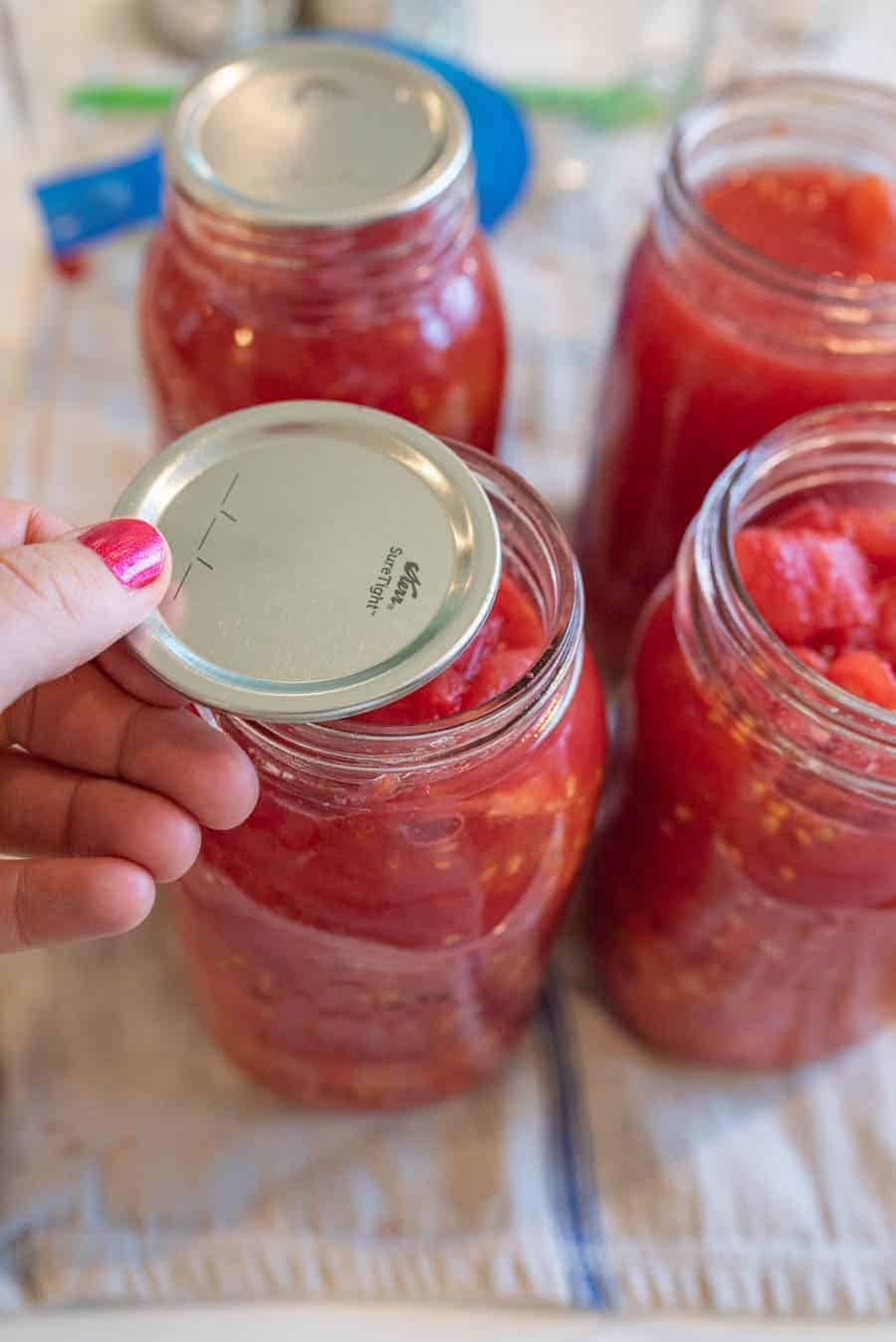
Expert Tips
- Use Any Tomatoes: The best tomatoes to can are whatever is ripe in your garden when you are canning.
- Small Pieces: Because the tomatoes have not been diced, when you open a can, use clean hands to squish the tomatoes into smaller pieces (which should be easy to do because they have been cooked).
- Don’t Experiment: It’s important to follow the recipe without changing or experimenting with adding other vegetables. This will ensure that the canned tomatoes are safe for consumption.
- Label Jars: Don’t skip labeling your jars with the contents as well as the month and year because canned tomatillo salsa is safe for up to a year.
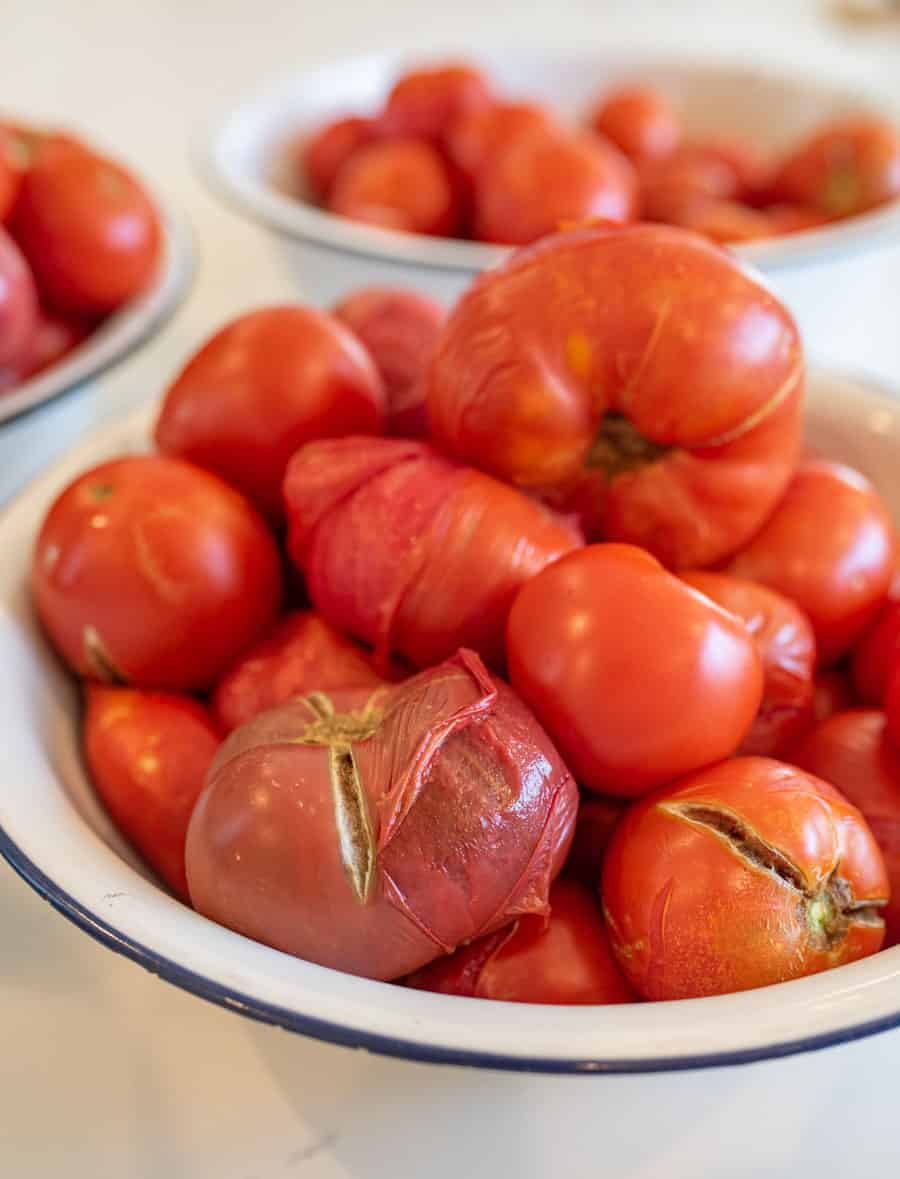
How do I know if I canned correctly?
After you have boiled the tomatoes and removed the hot jars from the canner, let them sit for a few hours. During this time you’ll often hear a ping or popping sound; that’s the lids adhering to the jar as they cool.
After a few hours of cooling, lightly tap the lid with your finger. The flat lid will feel firm and won’t spring back or pop up and down when touched. Think of it like a safety seal on jars from the store. It won’t move when sealed and it’ll pop up and down if it didn’t seal properly.
You can reprocess (boil) jars that didn’t seal the first time. Be sure to check the top lip of the jar for any chips in the glass and wipe the top well to clean it. Chips and chunks of food will prevent the jar from sealing.
Process with a new clean flat lid the second time. It will still need to boil the full amount of time the second time around.
How to Store Canned Tomatoes
It’s recommended that canned tomatoes are stored in a cool dark place.
If stored properly the tomatoes should last up to 1 year. They can last longer than that, but using within a year is the recommended timeframe.
Once a jar is opened, the tomatoes should be stored in the refrigerator if the whole jar isn’t used in a recipe.
Ways to Use Home Canned Tomatoes
You can use canned tomatoes to make any of these easy (and tasty!) recipes:
More Preserving Recipes to Consider
Freezing Foods
How to Freeze Eggs
Preserving Guide
How To Preserve Asparagus
Preserving Guide
How To Preserve Apricots
Preserving Guide
How To Preserve Apples
Did you make this recipe? Leave a ⭐️ review and share it on Instagram, Facebook, or Pinterest!
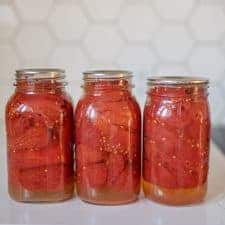
Canning Tomatoes in Water Bath Canner
Ingredients
- tomatoes, (see notes below)
- bottled lemon juice
- salt, optional
- 7 quart jars
- 7 two-part lids, (flats and rings)
- water bath canner
Instructions
- Prepare your tomatoes by removing any stems that might be left on them (this helps prevent them from poking each other which increases rot, it's best practice to do this as your take them from the plant). Sort through the tomatoes and remove any that have bad spots, signs of rot, or mold.
- Wash the tomatoes gently in cold water to remove any dirt.
- Bring a large stock pot, half filled with water, to a full boil.
- When the water is boiling gently add tomatoes to fill the pot.
- Let the tomatoes boil for about 3 minutes or until the skins start to split.
- Use a slotted spoon to remove the tomatoes to a large bowl.
- Repeat with remaining tomatoes.
- While the tomatoes cool a bit, prepare your jars and lids by washing and sanitizing them.
- Place the clean jars on a towel on your work surface and prepare them by measuring out 2 tablespoons of bottled lemon juice per quart jar. Measure out 1 teaspoon of salt per quart jar (salt is optional and can be omitted, lemon juice is not optional).
- Place a colander inside of a bowl.
- When the tomatoes have cooled enough to handle, work over the colander to catch any extra juice.
- Slip off the tomato skin (it will come off very easily) and then use a small knife to remove the core of the tomato (where the stem attaches).
- Place a funnel on top of one of the jars and fill the jar with the peeled and cored tomatoes. If they are very large, cut them into a few pieces so that they fit more evenly into the jar.
- Fill the jar with tomatoes until there is only 1/2 inch of empty space remaining at the top of the jar. It’s fine to really squish the tomatoes in there to fill the jar and cut them into pieces as needed so that the right amount is in the jar.
- Repeat with remaining tomatoes until 7 jars are filled (7 quarts is how many fit in a standard water bath canner and is considered a full canner load).
- Use a butter knife and poke it into the jar randomly through the tomatoes. This will help any air bubbles come up. If the tomatoes settle a lot after you do this, fill the jar up with a little of the juice that is in the bottom of your bowl beneath the colander so that there is once again only 1/2 inch remaining at the top of the jar.
- Wipe the tip edge of the jar with a clean damp cloth to remove any pieces of tomatoes. If there's stuff there, the jars won't seal properly.
- Add the flat lids to the jars.
- Screw on the round bands to each jar. Just tighten them naturally and don't over tighten them. You don't have to be too aggressive with screwing them on.
- Place the jar in your canner, making sure there is a rack on the bottom of the canner.
- Fill the canner with warm tap water so that it covers the top of the jars by 1-2 inches. The canner is very heavy, I use a pot filler or a pitcher to move water into my canner. I don't recommend trying to fill the canner up in the sink, it gets too heavy and the jars clink against each other.
- When the canner is full of water, turn on the heat to high and put on the lid.
- When the water is fully boiling, you can start your cooking timer.
- Boil quarts OR pints for 85 minutes (SEE NOTES for time based on your elevation).
- When the correct boiling time has elapsed, turn off the heat for the canner and let it rest there.
- When the canner has stopped boiling (I wait 5 or so minutes after I turn off the heat), open the lid.
- Use canning tongs to remove the hot jars from the canner and let them rest on a thick towel or on a cutting board lined with a dish towel. Be sure not to tap or touch the jars together when setting them down.
- Let the jars cool.
- Test to see that the jars are properly sealed by pressing on the top of the jar (it will feel firm and not pop up and down).
- Remove the screw on band from the jars, label the tops with the date and contents of the jar, and store for up to 1 year.
Notes
- The type and amount of tomatoes doesn’t matter a lot. I have canned lots and lots of kinds of tomatoes. You’ll need about 21 pounds of fresh ripe tomatoes to do 7 quarts of whole tomatoes in their own juice, 7 quarts is considered a full canner load. A bushel weighs 53 pounds and yields 15 to 21 quarts-an average of 3 pounds per quart.
- BOILING TIMES: If you live at an elevation of 1,000 feet above sea level or lower, boil your tomatoes for 85 minutes. If you live between 1,001 to 3,000 feet elevation, boil for 90 minutes. If you live between 3,001 to 6,000 feet elevation, boil for 95 minutes. And if you live above 6,001 feet elevation, boil for 100 minutes.
- This recipe is an official canning recipe from the National Center of Home Food Preservation. Do not change or alter the recipe. Changing the recipe or not following the directions can make the end product unsafe to store and eat.
- Use store-bought bottled lemon juice for this recipe. The acidity of bottled lemon juice is more consistent than fresh lemons.

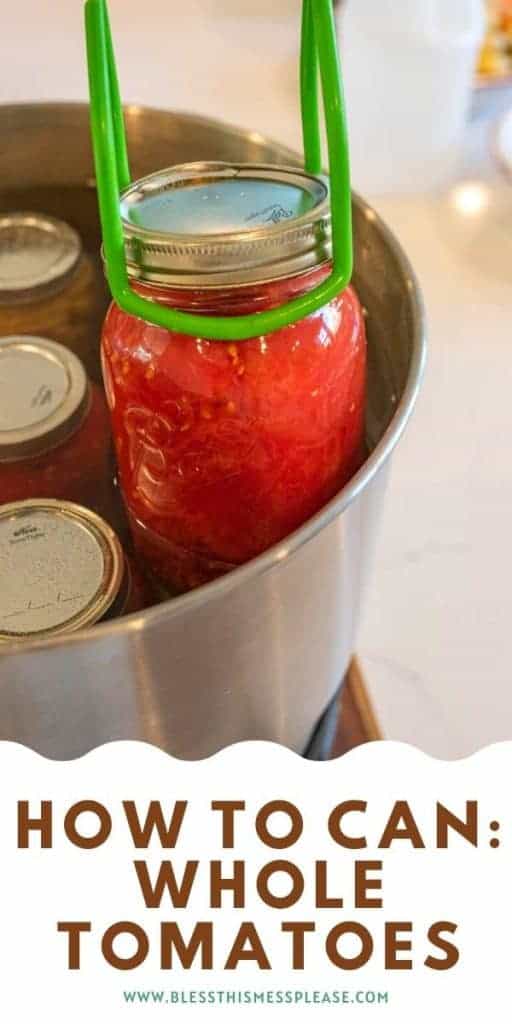
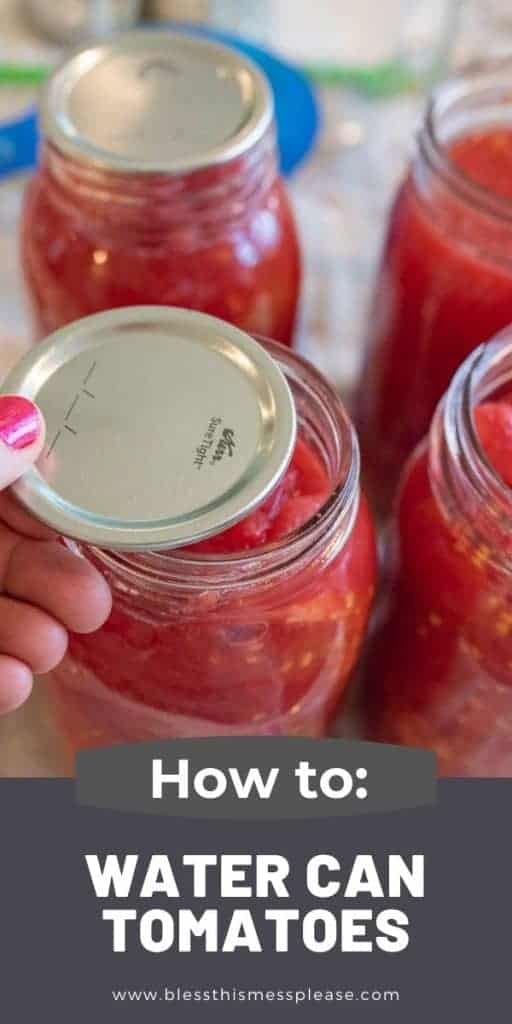
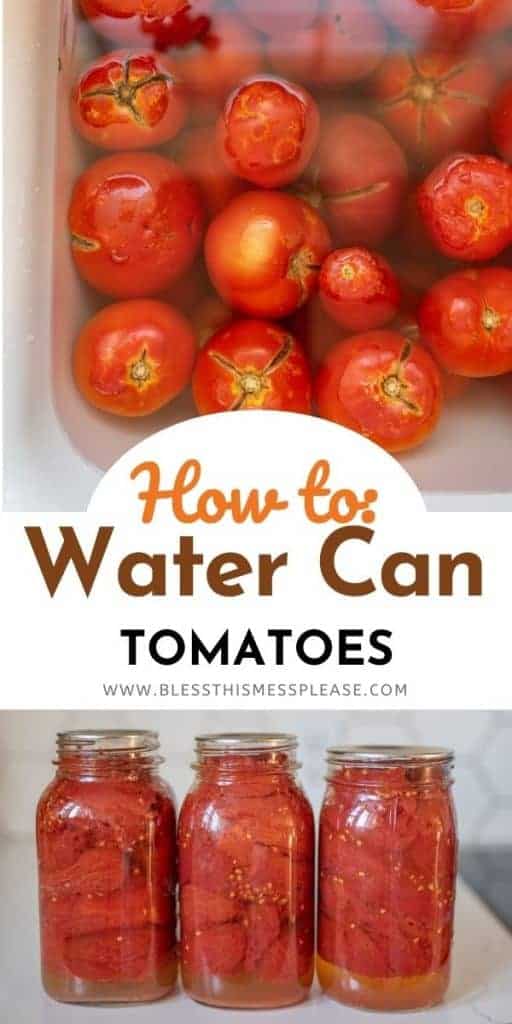
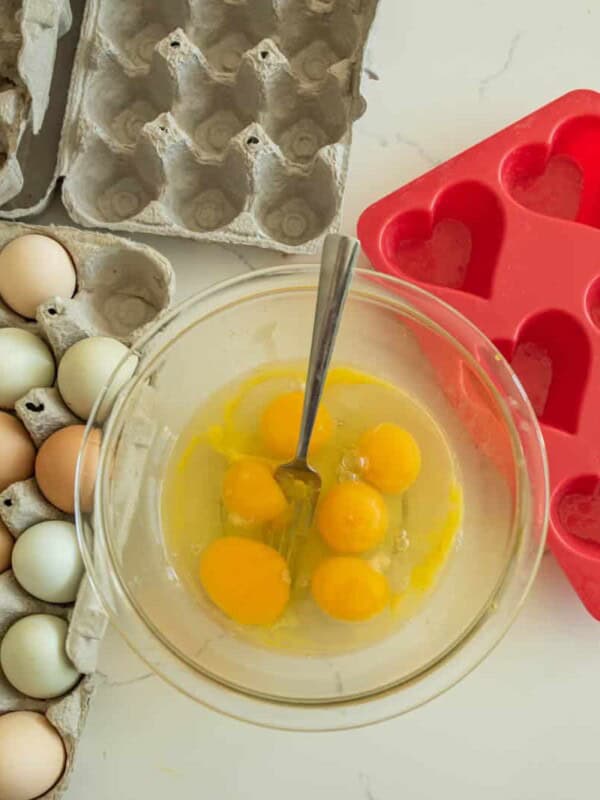
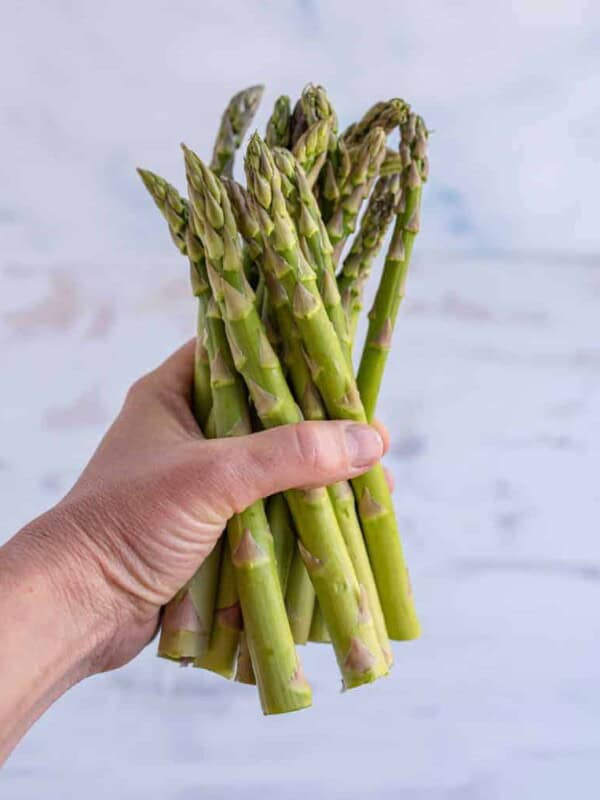
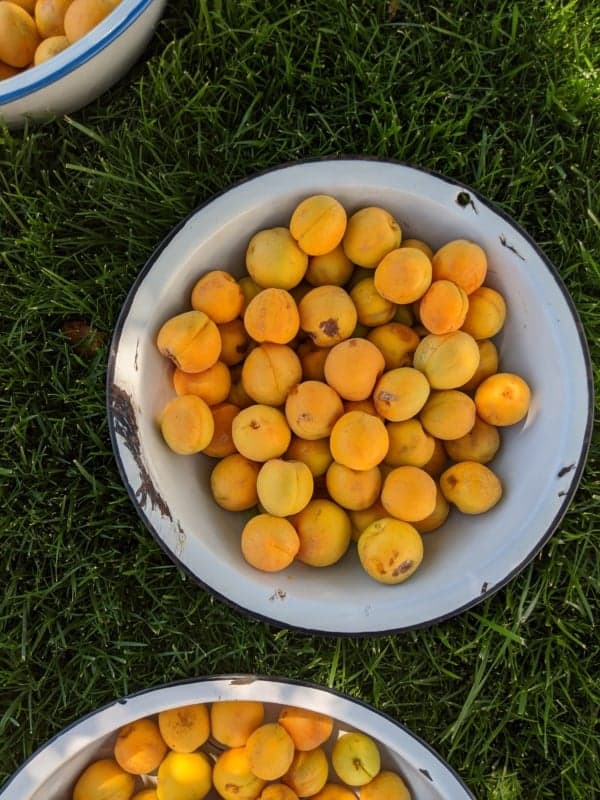
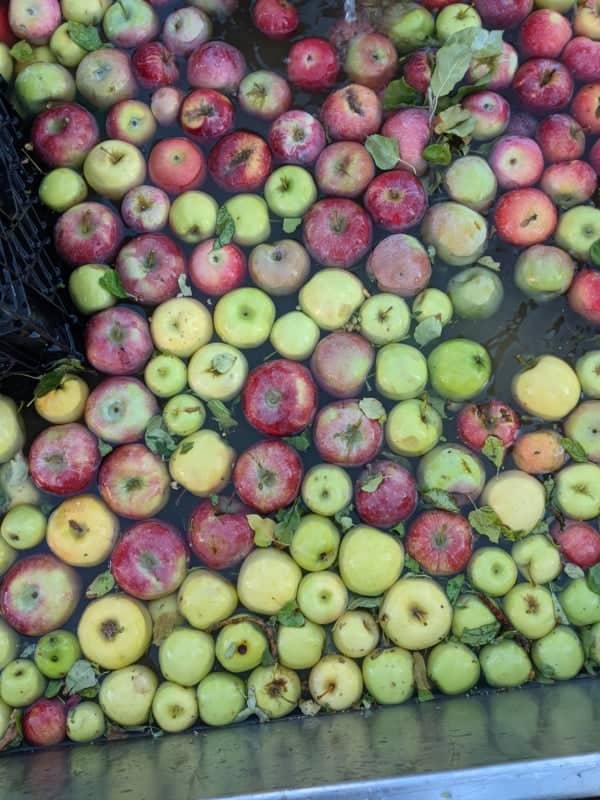






I was wondering if I can continue to put my tomatoes in jars while my 7 quarts are in the hot water bath processing? I wasn’t sure if it matters that they are jarred and waiting tongonintonthe hot water bath once the first batch is done.
If I do that, I normally dump half the water out of the canner once the first batch is done and put cold water in it so that the water that second batch of jars is going into is just warm and not boiling. That’ll help you to prevent your jars from breaking because of a big flux in temperature. It takes it a little longer to come back to boiling but it’s worth it to not break a jar!
Yes, I have a huge question. I canned my home tomatoes in their own juices by pressing on them. No added water, no boiling them first. I added my 2tbs of lemon to each quart. I only processed them for 45 mins but now I see some say I should have done 85 mins. They all sealed. Am I safe?
You added acid and that’s a long processing time even though it’s not the recommended. If it were me I’d still use them but make them as “use first” and use them sooner in your rotation than later. Do you know why type of tomatoes you canned? You could look up their acid level. I think the issue stems from sweeter or heritage varieties that don’t have enough acid in them.
I bought the Ball electric canner. I want to cook my tomatoes and can…how long to process?
It’s in the recipe Mary! 85 minutes and the notes section has how to adjust that time for your altitude.
Outstanding, this will be the 1st time I am going to do this and you made it look easy
Thanks for the instructions for canning! I used to do this quite regularly but its been awhile so I had to look it up again… Your boiling times are a bit off though. I looked at several other sites because I didn’t remember it taking so long. I found this on ballmasonjars.com: ‘Process filled jars in a boiling water canner 40 minutes for pints and 45 minutes for quarts, adjusting for altitude.”
I used the Ball Blue Book for my times so I know they are correct. You are free to process them longer if you’d like.
Yes 45 minutes is the time that I have always used with no problems, however I recently learned that if you are canning tomatoes in their own juice with the cold pack method it is best to use the longer time as noted in this recipe. The shorter time is still ok for hot pack with water.
Hi i love all your recipes ,and your cucumbers, were same as my mom used to do years ago , but i never had the recipe, now i do ty ty ty, also why not blend the tomatoes with the skin, so no peeling , and you have sauce and fiber , or they can be blended, and put in containers, and in the freezer, i did this for many years, and they are great for pasta sauce, just sharing a thought .
You totally can!